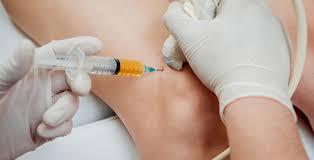Introduction
In the ever-evolving field of regenerative medicine, PRP full form stands for Platelet-Rich Plasma, a cutting-edge therapy that has gained immense popularity in recent years. Whether it's for healing injuries, rejuvenating skin, or treating hair loss, PRP therapy has proven to be a game-changer. But what exactly is PRP, how does it work, and what are its key benefits? Let’s dive deeper into this revolutionary treatment.
What is PRP?
Platelet-Rich Plasma (PRP) is a concentrated form of plasma derived from a patient’s own blood, enriched with a high number of platelets. These platelets contain essential growth factors that accelerate the body's natural healing process, making PRP therapy highly effective for a variety of medical and aesthetic applications.
How is PRP Prepared?
The process of preparing PRP involves the following steps:
-
Blood Collection: A small sample of blood is drawn from the patient.
-
Centrifugation: The sample is spun in a centrifuge to separate platelets from other blood components.
-
Plasma Extraction: The platelet-rich portion is extracted and prepared for injection.
-
Application: The PRP is then injected into the targeted area for therapeutic effects.
Key Uses of PRP Therapy
PRP therapy has diverse applications in both medical and cosmetic fields. Here are some of its most common uses:
1. PRP for Hair Loss
One of the most popular applications of PRP is in hair restoration. It is commonly used to treat androgenic alopecia (pattern baldness) by stimulating hair follicles and promoting hair growth.
2. PRP for Skin Rejuvenation
Often referred to as the "Vampire Facial," PRP therapy is widely used in aesthetic medicine for improving skin texture, reducing wrinkles, and enhancing collagen production.
3. PRP for Joint and Muscle Injuries
PRP injections are used to treat joint pain, arthritis, and tendon injuries by accelerating tissue repair and reducing inflammation.
4. PRP in Dentistry and Orthopedics
Dentists use PRP for faster healing after tooth extractions, implants, and bone grafts. In orthopedics, PRP is used to manage chronic pain and aid in post-surgical recovery.
Benefits of PRP Therapy
-
Natural and Safe: Since PRP is derived from the patient’s own blood, there is no risk of allergic reactions or rejection.
-
Minimally Invasive: The procedure involves simple blood extraction and injections, making it a non-surgical option.
-
Fast Recovery: Patients often experience quicker healing and minimal downtime.
-
Versatile Treatment: PRP therapy can be applied to multiple medical conditions and aesthetic improvements.
Potential Side Effects and Risks
Although PRP therapy is generally safe, some patients may experience minor side effects such as:
-
Mild pain or discomfort at the injection site
-
Swelling or redness
-
Temporary bruising
-
Risk of infection (very rare if performed under sterile conditions)
Who Can Benefit from PRP Therapy?
PRP therapy is suitable for individuals dealing with:
-
Thinning hair or hair loss
-
Wrinkles, fine lines, and skin aging
-
Joint pain, osteoarthritis, and sports injuries
-
Wound healing after surgeries
PRP vs. Other Regenerative Treatments
PRP therapy is often compared with treatments like stem cell therapy and microneedling. While stem cell therapy uses specialized cells to regenerate tissues, PRP therapy primarily focuses on enhancing the body’s natural healing response. Microneedling with PRP further boosts collagen production, making it a great combination for skin treatments.
How Long Does PRP Treatment Take?
A typical PRP session lasts between 30 to 60 minutes, including blood collection, processing, and application. Depending on the treatment area, multiple sessions may be required for optimal results.
What to Expect After PRP Therapy?
-
Immediate Effects: Some patients notice slight improvement within days, while others may require weeks to see visible results.
-
Long-Term Benefits: PRP therapy stimulates natural tissue regeneration, with results lasting for several months to a year.
-
Post-Treatment Care: Avoid excessive sun exposure, vigorous exercise, and harsh chemicals on the treated area for at least 48 hours.
Conclusion
PRP therapy is a revolutionary approach in regenerative medicine, offering a natural, safe, and effective way to heal injuries, restore hair, and rejuvenate skin. With minimal risks and impressive results, it is an ideal treatment for those looking to enhance their body’s natural healing capabilities. If you are considering PRP therapy, consult a qualified specialist to determine the best course of action for your specific needs.

